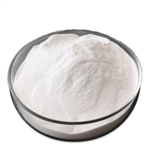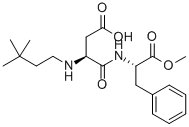Neotame: An Overview of the Next Generation Sweetener
May 21,2024
Introduction
Neotame, a synthetic sweetener derived from the dipeptide of the amino acids phenylalanine and aspartic acid, is garnering significant attention in the food industry and scientific community. As a potent sweetener, Neotame is approximately 7,000 to 13,000 times sweeter than sucrose, making it one of the most intense sweeteners available. Its chemical stability and versatility in various applications make it an attractive alternative to traditional sugars and other artificial sweeteners. This article aims to provide an in-depth analysis of Neotame, focusing on its synthesis, main components, applications, and storage methods[1].

Figure 1 Characteristics of Neotame
Synthesis of Neotame
The synthesis of Neotame is a fascinating process that involves the chemical modification of aspartame, another well-known artificial sweetener. The key step in Neotame's synthesis is the addition of a 3,3-dimethylbutyl group to the N-terminal of aspartame. This modification significantly enhances the sweetness of the molecule while simultaneously increasing its stability against enzymatic degradation. The synthesis involves several stages, including acylation, nitration, and reduction processes, which are carried out under strictly controlled conditions to ensure the purity and consistency of the final product.
Main Components
The primary chemical structure of Neotame is N-[N-(3,3-dimethylbutyl)-L-α-aspartyl]-L-phenylalanine 1-methyl ester. This structure is crucial for its exceptional sweetening power. The presence of the 3,3-dimethylbutyl group not only enhances the sweetness but also contributes to the compound's stability under a wide range of temperatures and pH levels. Unlike other sweeteners, Neotame's unique structure prevents it from breaking down into phenylalanine, making it safe for consumption by individuals with phenylketonuria (PKU). Additionally, this structural composition allows Neotame to resist enzymatic breakdown, enhancing its suitability for a variety of food products without altering their taste profiles.
Applications of Neotame
Neotame finds extensive use across various sectors of the food industry due to its high potency and minimal caloric contribution. It is particularly useful in beverages, baked goods, confections, and dairy products, where it significantly reduces the caloric content without compromising taste. Neotame is also utilized in non-food applications such as oral care products, including toothpaste and mouthwashes, where it helps to enhance flavor without contributing to dental decay. Its ability to blend with other sweeteners allows for the creation of customized flavor profiles and cost-effective sweetening solutions[2].
Storage Methods
Proper storage of Neotame is essential to maintain its stability and efficacy. Neotame should be stored in a cool, dry place away from direct sunlight and moisture. It is typically stable under normal storage conditions for up to five years. Packaging in tightly sealed containers is necessary to prevent contamination and moisture absorption, which could lead to degradation of the sweetener. The recommended storage temperature for Neotame is below 30°C (86°F).
Additionally, Neotame should be kept in its original packaging until it is ready to be used to maintain its integrity and prevent any potential loss of sweetness. Special attention should be paid to avoid storing Neotame near strong odors or volatile substances, as these can affect its taste and quality. Furthermore, bulk quantities of Neotame should be rotated regularly using a first-in, first-out system to ensure that older stock is used before its shelf life expires, thus maintaining its optimal efficacy.
Conclusion
Neotame represents a significant advancement in artificial sweeteners, offering both high sweetness intensity and exceptional stability. Its synthesis, characterized by the innovative addition of a 3,3-dimethylbutyl group, has set a new standard in the realm of sweetening agents. With its broad range of applications and favorable storage conditions, Neotame continues to play a vital role in the development of low-calorie, high-flavor food and non-food products. As research and development in this area continue, it is expected that Neotame will further cement its position as a preferred choice among next-generation sweeteners for the food industry and beyond[2].
![]() References
References
[1]Nofre C, Tinti J M. Neotame: discovery, properties, utility[J]. Food Chemistry, 2000, 69(3): 245-257.
[2]Chi L, Bian X, Gao B, et al. Effects of the artificial sweetener neotame on the gut microbiome and fecal metabolites in mice[J]. Molecules, 2018, 23(2): 367.
- Related articles
- Related Qustion
L-Menthol continues to be a compound of high interest due to its therapeutic properties and its versatility in applications across different industries.....
May 21,2024APIAluminum sulfate, a widely used inorganic compound,from water treatment to paper production, This paper reviews the properties, applications, preparation methods, and challenges.....
May 21,2024APINeotame
165450-17-9You may like
- Neotame
-

- $0.00 / 1KG
- 2024-06-03
- CAS:165450-17-9
- Min. Order: 1KG
- Purity: 99% PURITY
- Supply Ability: 20T
- Neotame
-

- $0.00 / 1kg
- 2024-05-20
- CAS:165450-17-9
- Min. Order: 1kg
- Purity: 0.99
- Supply Ability: 500000kg
- Neotame
-

- $18.00 / 10kg
- 2024-05-08
- CAS:165450-17-9
- Min. Order: 1kg
- Purity: 99.9
- Supply Ability: 5000




